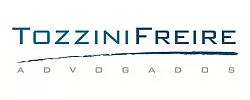ANVISA submits to Public Consultation two minutes of Resolutions related to medicinal cannabis
On June 11, 2019, the National Health Surveillance Agency (ANVISA) approved the submission to Public Consultation (CP) of two draft Resolutions (RDC) setting forth the rules for (a) cultivation of Cannabis spp. for medical and scientific purposes (CP No. 655/2019), and (b) registration and monitoring of cannabis-based drugs, its derivatives and synthetic analogues (CP No. 654/2019).
The most important propositions of CPs No. 655 and 654 are:
1. CP No. 655/2019:
- Cannabis plantation for medical purposes shall only be carried out by authorized entities, indoors, and in heavily secured sites, so to contain dissemination to the environment or any deviation whatsoever;
- Producers must guarantee the plant they grow are tracked from the acquisition of the seed until their final processing and disposal.
2. CP No. 654/2019:
- Cannabis-based drugs should only be prescribed to patients with severe and/or life-threatening debilitating diseases with no therapeutic alternative;
- For obtaining a cannabis-based drug marketing authorization before ANVISA, companies will have to comply with the regulation applicable to the type of drug at stake, besides other specific requirements proposed in such draft Resolution.
Contributions and comments to both CPs may be made until August 19, 2019, through a form available on the ANVISA’s website.
Ministry of Health publishes Risk sharing pilot project for inclusion of health technologies in the Public Healthcare System
Through Ordinance No. 1,297/2019 (Ordinance), the Ministry of Health (MoH) created the risk sharing pilot project for inclusion of Spinraza (Nusinersena) the Brazilian Public Healthcare System (SUS), providing access and free of charge treatment for patients with Spinal Muscular Atrophy Diseases SMA2 and SMA3.
The Ordinance defines the risk sharing agreement as the instrument executed between the MoH and the pharmaceutical company that supplies the drug, in view of the uncertainty about (i) drug cost-effectiveness; and (ii) consumption versus financial impact to the MoH budget.
In addition, the Ordinance establishes the aspects that must be included in the agreement: (i) reduction of the drug cost; (ii) description of the disease and eligibility criteria for the groups of patients who shall benefit from the agreement; (iii) expected results in terms of health and clinical effectiveness; (iv) a maximum number of patients who will receive the drug per year, and in case such number is exceeded, supplier shall bear the additional costs; (v) criteria for supply termination for patients whose treatment proves not to be efficient and; (vi) frequency for the drug clinical effectiveness review.
Finally, additional evidence verified during the pilot project shall be submitted, within the period of 3 years, to the National Commission of Technology Incorporation to SUS (CONITEC), for the re-evaluation of Spinraza (Nusinersena) for the treatment of SMA.
New law on regulatory agencies has been published
New Law No. 13,848/2019 now regulates the management, organization, decision-making process and social control of ANVISA and ANS. It is known as the Regulatory Agencies Act.
At first, the Law states the absence of guardianship or hierarchical subordination, functional, decision-making, administrative and financial autonomy, the term investiture of the officers and stability during such terms.
As to the decision-making process of the regulatory agencies, the Law determines (i) the regulatory agency must observe adequacy regarding ends and means for its activities, must not impose obligations, restrictions or sanctions which surpass the necessary measures in order to serve the public interest; (ii) the regulatory agency must indicate the factual and juridical premises that justify its decisions, including with respect to the edition or not of normative acts; (iii) the decision-making process of the regulatory agency regarding regulation must be carried out by a collegiate; (iv) the deliberative meetings of the collegiate office must be public and recorded through electronic means; (v) the minutes and proposals to modify normative acts of general interest must be submitted to public consultation, previously to the decision of the collegiate office; and (vi) the regulatory agency, by means of a collegiate decision, may call for a public audience to discuss ideas and make a decision on the relevant matter.
The National Congress, assisted by the Federal Court of Auditors, shall carry out external control of ANVISA and ANS. ANVISA and ANS shall elaborate an annual detailed report of their activities, highlighting the compliance of the sector policy and current the strategic plans and annual management plan.
On one hand, the strategic plan corresponds to the strategic goals, targets and results expected of the actions of the regulatory agency regarding management and its regulatory, fiscal and normative powers, for each period for every 4 years. On the other hand, the annual management plan corresponds to the consolidated annual instrument of the agency, which contemplates actions, results and goals regarding purposeful and management processes.
The Law also establishes that the regulatory agencies and the competition defence bodies shall act in cooperation, in favour of experience exchange. ANVISA and ANS shall immediately report any fact that may be considered an infraction to the economic order and the Administrative Council for Economic Defence (CADE) shall notify ANVISA and ANS with relation to decisions on potentially anticompetitive conducts and merger cases.
The rule also addresses the articulation between regulatory agencies and the National System of Consumer Defence (SNDC): ANVISA and ANS are responsible for guaranteeing the compliance of the consumer defence legislation, monitoring and tracking the market practices of the agents within the regulated sector.
The Regulatory Agencies Law turns shall enter into force 90 days after its publication on Official Gazette, which occurred on June 26, 2019.
ANVISA publishes a CP on criteria and terms regarding the renewal of registration and notification of drugs
On June 26, 2019, ANVISA published Public Consultation No. 657/2019 (CP) about criteria and terms regarding the renewal of register and notification of drugs.
The CP proposes a technical regulation aiming at establishing criteria, terms and minimum documentation in order for the registration and notification of drugs to be renewed. Such regulation would apply to all registered and notified drugs, except for those regulated by specific and valid legislation.
Among the noteworthy aspects proposed by the CP, we draw attention to the following:
- The registration / notification of the drug shall be valid for 10 years, with the possibility of renewal for equal and successive terms;
- The registration / notification renewal must be applied for no sooner than 12 months and no later than 6 months from the due date of the register / notification;
- The registration shall be considered automatically renewed if a decision has not been published until such due date;
- The registration shall be declared expired if the renewal is not required within the abovementioned term;
- Time calculation on the term to request the revalidation of the registration, the final due period shall be considered as the last day of the due month of the register.
The contributions to the CP may be made until August 16, 2019, through a form available on the ANVISA website.
The content of this article is intended to provide a general guide to the subject matter. Specialist advice should be sought about your specific circumstances.


